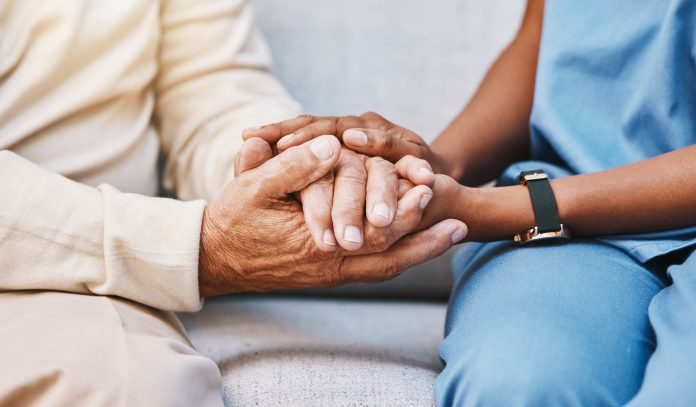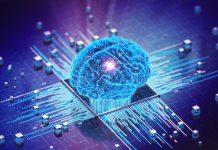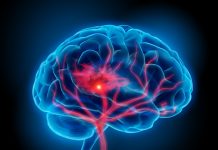Lorna Rothery spoke to stroke researcher and ESO Fellow Rajiv Advani about the wider psychological impacts of stroke, how AI could be harnessed to improve post-stroke care for patients, and the importance of increasing symptom awareness
Annually, 15 million people worldwide suffer a stroke. (1) Timely detection and diagnosis of a stroke is crucial to improving patient outcomes; the earlier a patient is treated, the better their chance of recovery. However, a lack of knowledge about the symptoms among the general public and the complexities of diagnosis in acute settings can affect patient outcomes. For instance, patients with acute vestibular syndrome (AVS), a condition characterised by sudden-onset, continuous vertigo that lasts for more than 24 hours, may present with dizziness, instability, and nausea/vomiting, symptoms that can be associated with stroke.
Indeed, there is a high prevalence of dizziness in emergency departments, with a significant proportion related to strokes. Conventional approaches to identifying conditions like AVS based on risk factors and symptom types have been deemed inadequate. (2) Likewise, patients who have suffered a stroke but present with non-specific complaints can be misdiagnosed. Combined with other examination procedures, Artificial Intelligence (AI) can support clinical decision-making. Though it is considered standard care in many places, many healthcare facilities lack access to software that could dramatically improve patient outcomes. (3)
Rajiv Advani is a Fellow of the European Stroke Organisation and a stroke researcher at the leading stroke unit at Oslo University Hospital, Norway. Lorna Rothery spoke to him about the wider psychological impacts of stroke, symptom awareness, and how AI could be harnessed to improve stroke care.
What common emotional, behavioural, and cognitive changes can patients experience after a stroke?
The most common impact we observe is related to depression due to the effects a stroke can have on a patient’s state of wellbeing. Depending on the type of symptoms the patient experiences, they may have emotional reactions to not being able to live their life as they did before the stroke. At the hospital, we recognise the importance of addressing these challenges and supporting patients and their families during this difficult time.
When a loved one suffers from a stroke, it can have a profound impact on their partner and interpersonal relationships. The stroke victim’s partner may need to adjust their expectations and priorities as their loved one may no longer be able to travel, go out for dinners, or engage in other activities they once enjoyed. Additionally, the partner may have to take on more household chores and responsibilities, which can change the relationship dynamics and emotionally strain the patient and their close family.
The brain is highly complex, and we cannot test all of its functions. We do not know how the patients are affected and how their brains are wired; it’s so individual, which plays into the emotional and psychological aspects. For instance, one patient had a minor stroke, which resulted in him losing the ability to use his left hand as he had previously done. He could still perform all his daily tasks; if you saw him in the street, you wouldn’t think he’d had a stroke. But his fine motor skills were reduced to a level where he could no longer play the cello. That, in itself, was enough to lead to the patient being depressed. The one thing he did to give him joy, his hobby, got taken away from him. That affected him quite profoundly, and he ended up on antidepressants. So, even though I couldn’t see any significant challenges with his symptoms, losing the ability to play the cello was still so personal and essential; those things make a big difference.
Are there disparities in access to stroke care and support?
There are significant inequalities in healthcare depending on the country you reside in. Some nations have not yet established effective acute treatment procedures, which can be the difference between life and death. However, when it comes to tailoring follow-up post-stroke care, it boils down to how much the government is willing to invest in hospital resources. Unfortunately, many governments, such as Norway and the UK, have cut hospital funding, resulting in inadequate outpatient follow-up. Unless it’s a medical issue that can be identified and treated, other problems tend to be overlooked.
How can healthcare providers and government bodies collaborate to provide education and strengthen stroke prevention programmes?
I have researched and written about this before; one of my first publications was about the importance of public awareness of stroke symptoms. Even though we have advanced treatment options for stroke, if patients, families, or witnesses do not recognise the symptoms and seek treatment early enough, we are unable to help them. No matter how advanced our technology is, we cannot treat stroke if patients do not reach us in time.
To combat this, we need to have stroke awareness campaigns every few months to keep people aware of the symptoms and the importance of seeking treatment quickly. This is effective, though people tend to forget, so it needs to be repeated more often.
The government and healthcare providers must collaborate to ensure resources are available for post-stroke care. This includes preventing another stroke and taking care of both the stroke victim and their next of kin. Government bodies and healthcare providers should cooperate better to provide physical and psychological rehabilitation resources. Both approaches are equally important.
How can emerging health technologies like AI help detect and prevent stroke?
Stroke medicine has utilised AI for over a decade, specifically in acute treatment. AI identifies how much brain tissue is at risk or damaged and determines the best treatment options. While deep learning algorithms are actively used, transitioning them to other uses, such as prevention, is challenging.
By harnessing AI, there is a lot we can do to improve patient care. I see a patient in my outpatient clinic for about 30 minutes after they’ve suffered from a stroke; they have so many questions, and you cannot discuss everything in that short space of time. If we could combine newer technologies with rehab and follow-up, that would be fantastic, and it would really help a huge number of patients.
Many patients are now utilising technology such as digital watches that measure heart rate and oxygen saturation, which can provide valuable information about cardiovascular health. As resources for public healthcare are being reduced, there is a growing opportunity for healthcare providers and private industry to collaborate on creating personalised rehabilitation programs with the help of AI. By incorporating AI, stroke patients could benefit from personalised training programs that motivate and guide them, similar to those already used by gyms and physical therapists.
Are there any notable developments or challenges in stroke management that our readers should be more aware of?
It would be beneficial if patient advocacy groups and healthcare providers could bring post-stroke care to a more regional and governmental level. A lot of focus and resources are being put into acute treatment, but there is much to be gained by focusing on follow-up care and rehabilitation. There is a significant gap in cognitive and psychological rehabilitation after a stroke, which is where AI technologies can be helpful. For instance, AI is used to help those individuals who have become blind in a specific part of their visual field to train and improve their vision. By improving their visual field to the extent where they become more independent or can drive, we can significantly improve the quality of daily life for stroke survivors. If more emphasis is placed on post-stroke care and rehabilitation, it will contribute to better outcomes for stroke patients.
References
- https://www.emro.who.int/health-topics/stroke-cerebrovascular-accident/ index.html
- Mantokoudis, Georgiosa; Otero-Millan, Jorgeb,c; Gold, Daniel R.d. Current concepts in acute vestibular syndrome and video-oculography. Current Opinion in Neurology 35(1):p 75-83, February 2022. | DOI: 10.1097/
Contributor Details
Editor's Recommended Articles
-
Must Read >> Advancing the future of UK stroke care with deep AI
-
Must Read >> Is radon exposure linked to increased stroke risk?














